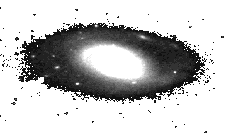

ALWAYS use the videos if you missed a class AND for Exam reviews
Be able to define:
Milky Way
Milky Way Galaxy
Galactic Disk
Galactic Bulge
Galactic Center
Open or Galactic Cluster
Globular Cluster
Population I Stars
Population II Stars
Be able to:
- List the major parts of our galaxy, what is found in each part, and and know where they are located.
- Describe the shape and size of the Milky Way Galaxy
- Define the Sun's position in the Milky Way.
- Explain the differences between a Galactic Cluster and a Globular Cluster
- Explain the differences between a Population I and a Population II stars by location and age..
Be able to define:
Elliptical Galaxies
Disk Shaped Galaxies
Irregular Galaxies
Spectroscopic Parallax
Main Sequence Fitting
Cepheid Variable as distance indicator
Type I supernova as a distance indicator
Local Group
Be able to:
- Explain the differences between the 3 major types of galaxies
- Review the Geometric and Standard Candle methods of determining astronomical distances
- Explain how the Period-Luminosity Relation is used to determining distances outside our galaxy.
- Why is a Type I supernova used instead of a Type II for distance determination?
TEST 7 (AND THE FINAL) COVER MATERIAL UP TO THIS POINT (and includding all material from Ch 6)